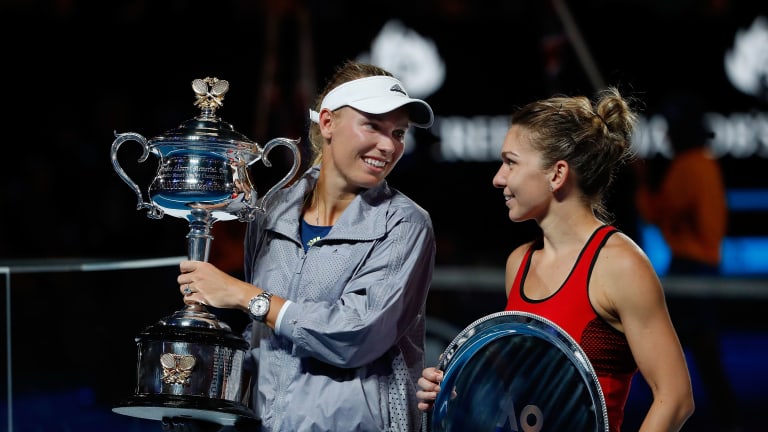Overnight: How Caroline Wozniacki finally became a Slam-winning No. 1
By Jan 27, 2018Lifestyle
PHOTOS: Carlos Alcaraz, Tommy Paul, Maria Sakkari and Caroline Wozniacki take Mexico City
By Dec 01, 2023Social
TennisFest GNP announces exhibitions featuring Carlos Alcaraz and Caroline Wozniacki
By Sep 26, 2023Facts & Stats
Ranking Reaction: Djokovic and Sabalenka ascend to No. 1, Coco rises to No. 3
By Sep 11, 2023US Open
Coco Gauff surges to second US Open quarterfinal, survives Caroline Wozniacki challenge
By Sep 03, 2023US Open
Three to See, Day 7: Paul vs. Shelton; Gauff vs. Wozniacki; Swiatek vs. Ostapenko
By Sep 02, 2023Style Points
Caroline Wozniacki on US Open bodysuit: “We may as well make a statement”
By Sep 02, 2023Social
Quote of the Day: Coco Gauff's comeback inspiration? "I can't lose in front of Justin Bieber!"
By Sep 02, 2023US Open
Coco Gauff comes back to win at the US Open and set up a match against Caroline Wozniacki
By Sep 02, 2023US Open
Caroline Wozniacki bests Jennifer Brady in US Open battle of players on the comeback trail
By Sep 01, 2023Overnight: How Caroline Wozniacki finally became a Slam-winning No. 1
Caro and Halep gave us one last fight to remember in a women's event filled with them.
Published Jan 27, 2018
Advertising

Overnight: How Caroline Wozniacki finally became a Slam-winning No. 1
© AP
Advertising

Overnight: How Caroline Wozniacki finally became a Slam-winning No. 1
© 2018 Getty Images
Advertising

Overnight: How Caroline Wozniacki finally became a Slam-winning No. 1
© 2018 Getty Images